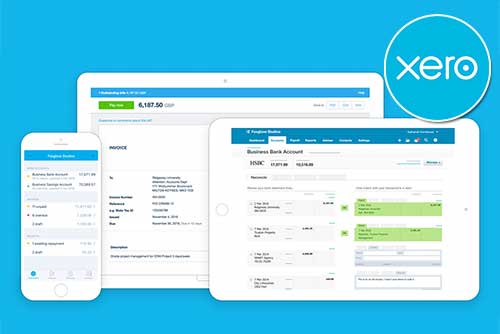Understanding Assets in Accounting: A Comprehensive Guide
Understanding what constitutes an asset is fundamental to navigating the complexities of financial management, whether in personal finance or business operations. In this exploration, we delve into the essence of assets, unravelling their diverse forms and significance. Join us as we embark on a journey to uncover the essence of assets and their pivotal role in shaping financial landscapes and achieving prosperity.
What are Assets?
Assets are economic resources that a business or individual owns or controls, with the expectation that they will provide future benefits, typically in the form of generating income or contributing to the entity’s operations.
In accounting, assets are typically classified as tangible or intangible and are recorded on a balance sheet. Tangible assets include physical items such as cash, inventory, property, plant, and equipment, while intangible assets encompass non-physical assets like patents, trademarks, copyrights, and goodwill.
Assets play a crucial role in determining an entity’s financial health and are essential for generating revenue, supporting operations, and creating value.
Different Types of Assets
The six primary categories of assets include:
- Tangible Assets: These are physical assets with a measurable value, such as cash, inventory, vehicles, buildings, machinery, and land.
- Intangible Assets: These are non-physical assets without a physical form, including intellectual property, goodwill, and brand recognition.
- Current Assets: Assets expected to be converted into cash or used up within a year, including accounts receivable, cash and cash equivalents, short-term investments, inventory, and prepaid expenses.
- Fixed Assets: Also known as long-term assets or property, plant, and equipment (PP&E), these are assets with a useful life of more than one year and are used in the production of goods or services rather than being held for resale, such as land, buildings, machinery, and vehicles.
- Operating Assets: Assets directly related to a company’s core day-to-day business operations and essential for generating revenue. Examples include inventory, accounts receivable, and property, plant, and equipment used in production.
- Non-operating Assets: Assets that are not directly related to a company’s core business operations and are not essential for generating revenue, such as investments in other companies, land held for investment purposes, and intellectual property not used in business operations.
The Role of Assets in a Business
Assets play a multifaceted role in the success and operations of a business, serving as essential components of its financial health, operational capabilities, and strategic growth. Here’s how assets contribute to a business:
- Facilitating Operations: Assets such as machinery, equipment, and inventory enable businesses to produce goods or deliver services efficiently.
- Generating Revenue: Assets contribute directly to revenue generation by enabling businesses to produce and sell goods or services. For example, machinery and equipment are used in manufacturing processes, while inventory is sold to customers, generating sales revenue.
- Supporting Growth and Expansion: Investments in property, plant, and equipment, as well as acquisitions of new technologies or intellectual property, can fuel growth initiatives.
- Enhancing Competitiveness: Assets can provide businesses with a competitive advantage by improving efficiency, quality, or innovation. For example, investments in technology and research and development can lead to product differentiation, increased market share, and higher profitability.
- Securing Financing: Assets serve as collateral for securing financing from lenders or investors. Tangible assets such as real estate or equipment can be pledged as security for loans, providing lenders with assurance of repayment.
The Role of Assets in Accounting
Assets play a fundamental role in accounting, serving as essential elements in understanding and analysing an entity’s financial position, performance, and viability. Here’s how assets contribute to accounting:
- Financial Reporting: Assets provide valuable insight into the resources owned by the entity. By accurately valuing and categorising assets, accounting standards ensure transparency and consistency in financial statements, enabling stakeholders to assess the entity’s wealth and solvency.
- Measurement of Wealth: Assets represent the wealth or value of an entity, reflecting its accumulated resources and potential for generating future economic benefits.
- Liquidity and Solvency Analysis: Assets play a crucial role in evaluating an entity’s liquidity and solvency, as they represent the source of funds available to meet short-term obligations and long-term liabilities.
- Investment and Financing Decisions: Assets influence investment and financing decisions by providing insight into a company’s capital structure, risk profile, and growth potential. Investors and creditors evaluate the quality and composition of assets to assess creditworthiness, determine investment opportunities, and negotiate terms for financing or equity investments.
Depreciation of Assets
Depreciation of assets reflects the gradual reduction in the value of a company’s assets over their useful lives. This process allows businesses to allocate the cost of an asset over the period it is expected to be used, rather than expensing the entire cost in the year of purchase.
In the context of assets held for sale, depreciation plays a significant role in determining the carrying value of the asset. This value, calculated as the original cost less accumulated depreciation, is compared with the fair value of the asset, less costs to sell. The lower of these two amounts is reported on the balance sheet, providing a more accurate representation of the asset’s worth.
For example, a business that purchases an asset for $20,000. Over time, this asset depreciates due to wear and tear, reducing its value. Let’s say after a certain period, the accumulated depreciation is $9,000. This means the carrying value of the asset, which is the original cost minus the accumulated depreciation, is now $11,000. This depreciation is recorded in the company’s financial statements, reducing the value of the company’s assets.
The Importance of Assets in Accounting
Understanding assets in accounting is a fundamental aspect of managing a business. These resources play a crucial role in determining a company’s financial value. They contribute to business growth, serve as collateral for loans, and help gauge net working capital. Moreover, the correct classification of assets is vital in assessing risk and solvency.





















